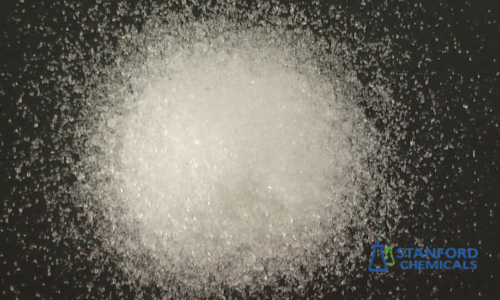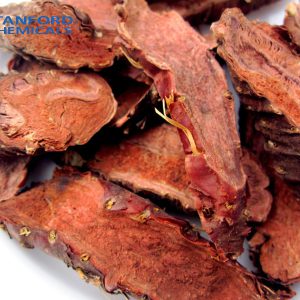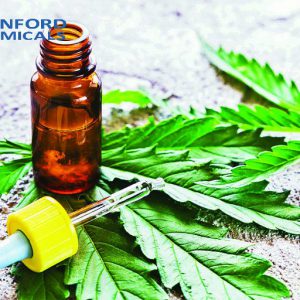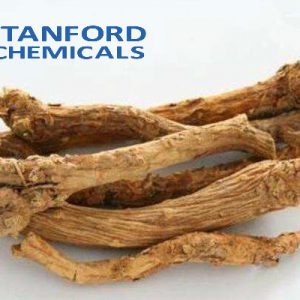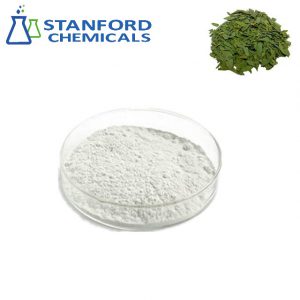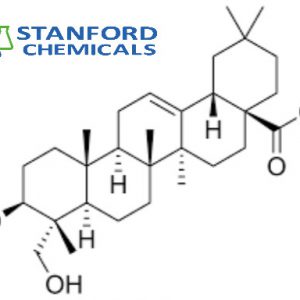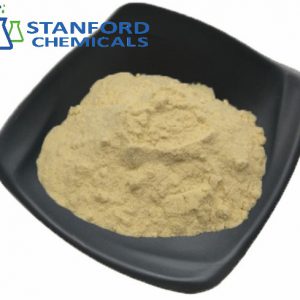- Home
- Herbal Extract
- HA9006 Rotundine Powder
HA9006 Rotundine Powder
| Parameter | Value |
| Material | Rotundine |
| Appearance | White Crystal Powder |
| Purity | 98% (HPLC) |
| CAS Number | 10097-84-4 |
related products: Echinacea Purpurea Extract, Bearberry Leaf Extract Powder, Loquat Leaf Extract
- Description
Description
Rotundine Powder Description
Rotundine Powder is characterized as a pale-yellow to white crystalline solid hygroscopic having the molecular formula C₂₁H₂₅NO₄ and molecular weight 355.43 g/mol. Rotundine decomposes when heated above 155°C and is photosensitive, which yellow slowly when exposed to light or heat. The compound is insoluble in water but freely soluble in chloroform, sparingly soluble in ethanol or ether, and stable salts in dilute sulfuric acid for aqueous solutions. Its bioactivity arises from stereoselective binding at dopamine receptors (D1/D2/D3) and 5-HT1A serotonin receptors (IC50: 370 nM), antagonizing release of neurotransmitter in the amygdala to inhibit seizure and pain transmission. Stability is confirmed by thermogravimetric analysis under 60°C, and solubility is pH-dependent, acidic being preferred (optimum pH 1–3). Analytical reports indicate a melting range of 140–143°C for sulfate salts, with heavy metals in amounts below pharmacopeial amounts (lead ≤20 ppm). Stability requires tight storage in light protected at 15–25°C to prevent oxidative degradation of its tetracyclic isoquinoline structure.
Rotundine Powder Specifications
Properties
| Property | Value |
| Material | Rotundine |
| Appearance | White Crystal Powder |
| Purity | 98% (HPLC) |
| CAS No. | 10097-84-4 |
| Molecular Formula | C21H25NO4 |
| Molecular Weight | 355.43 |
| Melting Point | 141-144 °C |
| Boiling Point | 482.9 °C at 760 mmHg |
*The above product information is based on theoretical data. For specific requirements and detailed inquiries, please contact us.
Rotundine Powder Applications
- Pharmaceuticals and Therapeutics: Formulated together in oral tablets, injectables, and quick-melting sublingual tablets for pain relief due to neuropathy, menstrual cramps, and tension-induced insomnia. Clinical dosage of 60–120 mg/day inhibits the discharge of dopamine in the central nervous system, reducing the frequency of seizures and muscle spasms without inducing respiratory depression or dependence.
- Neurological Research: Employed in the form of a molecular probe to examine the dynamics of dopamine receptors and serotonin pathways in models of addiction. Antagonism of the D3 receptor suppresses cocaine-seeking behavior in preclinical models, establishing research into substance abuse treatment as valid.
- Functional Supplements: Altered into herbal sleep aids and anxiety supplements with dosages of 30–60 mg. Synergizes with magnesium glycinate to increase GABAergic activity, which potentiates the latency and duration of sleep in stress-induced insomnia.
- Veterinary Medicine: Part of pet analgesics for post-surgical pain and stress relief. Species-specific dosing (1–2 mg/kg) treats canine noise phobia and feline stress cystitis.
Rotundine Powder FAQs
Q1. Why choose 98% purity rather than lower grades?
High purity minimizes toxic impurities (e.g., residual plant lectins). Demand Certificates of Analysis (CoA) that promise HPLC ≥98% and heavy metals (Pb ≤20 ppm).
Q2. Why does it cause mild nausea initially?
Alkaloids temporarily irritate the gastric mucosa. Take with food or switch to enteric-coated capsules. Symptoms typically pass in 3–5 days.
Q3. Does sunlight ruin its effectiveness?
Yes. Keep in amber bottles at <25°C. Discard if the powder becomes yellow.

